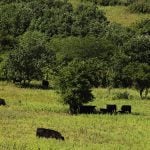Feeder cattle prices in Western Canada were steady with week-ago levels. Feeder steers weighing 565 pounds sold for $155 in central Alberta; 725-pound steers moved at $138 in southern Alberta. Top prices for 700- to 750-pound feeder steers were $130 to $135 per hundredweight in central Saskatchewan while the Manitoba market was slightly softer with these same weight cattle moving at $125-$129/cwt.
Fed cattle made new highs for the year with Alberta packers paying up to $108/cwt for steers and $107/cwt for heifers. Feedlot operators can lock in some favourable prices for summer delivery justifying the current price structure for replacement cattle.
Read Also

U.S. grains: Soybeans touch 16-month high, wheat firm on Chinese demand hopes
Chicago soybean futures hit 16-month highs on Monday on expectations China will restart large-scale U.S. soy buying after the two countries reached a deal to de-escalate their trade war.
This is a demand-driven rally as first-quarter Canadian and U.S. beef production will come in above 2010 levels. U.S. consumer confidence reached 60.6 in January, the highest level since May 2010 as the jobless rate dropped to nine per cent. The U.S. has now had four consecutive quarters of GDP growth over two per cent (year over year) and retail spending continues to improve. The latest official U.S. Department of Agriculture data shows away-from-home food spending during December rose three per cent in comparison to December 2009; at-home food spending rose 2.2 per cent. This trend is expected to continue into the second quarter of 2011.
A large volume of feeder cattle were placed sooner than normal last fall due to drier conditions in the U.S. southern Plains. Therefore, we may see a vacuum of demand later in April when these cattle usually move into feedyards. Secondly, U.S. cattle producers are showing greater interest in bred heifers or replacement heifers for breeding. This could further tighten the supply later in spring. We may see larger numbers of Manitoba cattle move south instead of west if the Nebraska market shows a premium over Alberta.
— Jerry Klassen is a commodity market analyst in Winnipeg and maintains an interest in the family feedlot in southern Alberta. He writes an in-depth biweekly commentary, Canadian Feedlot and Cattle Market Analysis, for feedlot operators in Canada. He can be reached by email at [email protected] or at 204-287-8268 for questions or comments.












